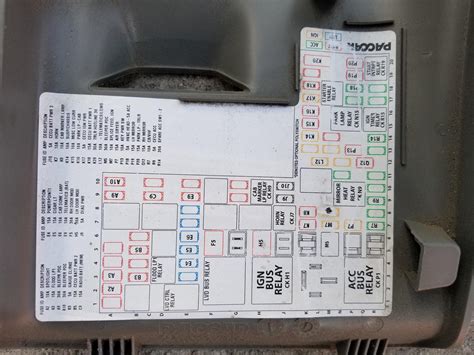light wiring diagrams multiple lights by Lex Fridman
Illuminate Your Space: Effortless Light Wiring Diagrams for Multiple Lights
Discover the ultimate guide to light wiring diagrams for multiple lights. Simplify your setup and brighten up your space effortlessly.
Are you tired of feeling like you need a degree in electrical engineering just to set up your lighting? Well, buckle up because I’m about to shed some light on a topic that’s brighter than your average bulb: light wiring diagrams for multiple lights. But don’t worry, I promise this won’t be as shocking as a short circuit! Picture this: your home transformed into a beacon of brilliance with effortless wiring solutions. Sounds electrifying, right? Let’s wire up some laughter along with those lights as we dive into the illuminating world of multiple light wiring diagrams.
Light Wiring Diagrams for Multiple Lights
When it comes to illuminating multiple spaces efficiently, understanding light wiring diagrams is crucial. With the right setup, you can transform any area into a well-lit and inviting environment. Here’s what you need to know:
- Plan Your Layout: Before diving into wiring, map out where each light will go. Consider the room’s layout and how you want the light to flow.
- Choose the Right Wiring Diagram: Multiple lights require specific diagrams to ensure proper connectivity and functionality.
- Understanding Parallel vs. Series Wiring: Parallel wiring allows each light to function independently, while series wiring links lights sequentially. Choose the method that suits your needs.
- Importance of Proper Wiring: Incorrect wiring can lead to flickering lights, power surges, or even electrical fires. Follow diagrams meticulously to ensure safety.
- Consider LED Lighting: LED lights are energy-efficient and offer longevity, making them ideal for multiple light setups.
Remember, a well-lit space enhances productivity and ambiance. By mastering light wiring diagrams for multiple lights, you’re one step closer to creating the perfect environment for your business or workspace.
Introduction
Exploring the intricacies of light wiring diagrams for multiple lights unveils a world of possibilities. Whether you’re a seasoned electrician or a DIY enthusiast, mastering these diagrams can illuminate your understanding of electrical systems.
Planning Your Layout
Before diving into the wiring process, take a moment to sketch out your lighting layout. Consider factors such as room dimensions, furniture placement, and natural light sources. A well-thought-out plan lays the foundation for a seamless wiring experience.
Selecting the Right Diagram
Choosing the appropriate wiring diagram is akin to selecting the perfect tool for a job. Evaluate your specific lighting needs and explore diagrams that align with your vision. Remember, the right diagram sets the stage for a successful lighting installation.
Understanding Parallel vs. Series Wiring
Parallel and series wiring configurations offer distinct advantages and considerations. Familiarize yourself with the differences to make informed decisions about your lighting setup. Each approach presents unique opportunities to optimize functionality and efficiency.
Emphasizing Proper Wiring Techniques
Attention to detail is paramount when it comes to wiring multiple lights. Ensure connections are secure, and wires are properly insulated to prevent electrical hazards. By prioritizing safety and precision, you lay the groundwork for a reliable lighting system.
Exploring LED Lighting Options
LED lighting technologies offer unparalleled energy efficiency and versatility. Consider integrating LED fixtures into your multiple light setup to reduce energy consumption and enhance ambiance. With LED solutions, you can illuminate your space while minimizing environmental impact.
Optimizing Lighting for Productivity
Strategically designed lighting schemes have the power to elevate productivity and mood in any environment. Experiment with different illumination levels and fixture placements to create an inspiring workspace that fosters creativity and focus.
Conclusion
Embark on your journey to master light wiring diagrams for multiple lights with confidence and enthusiasm. By understanding the principles and techniques outlined above, you can bring your vision of well-lit spaces to life. Let your creativity shine as you illuminate the world around you.
Understanding Light Wiring Diagrams for Multiple Lights
Lighting can dramatically transform the ambiance of any space, but getting the wiring right for multiple lights can be daunting. However, light wiring diagrams multiple lights serve as your roadmap, guiding you through the intricacies of electrical connections. Whether you’re a DIY enthusiast or a seasoned electrician, mastering these diagrams can illuminate your understanding and empower you to create captivating lighting setups.
Deciphering the Basics
At first glance, wiring diagrams for multiple lights may seem like a labyrinth of lines and symbols. However, they are essentially blueprints that illustrate how to connect lights to a power source. Each line represents a wire, while symbols denote switches, fixtures, and connections.
Mapping Out Your Plan
Before delving into the intricacies of wiring, take a moment to envision your lighting design. Consider the purpose of each light, the flow of illumination, and the ambiance you wish to create. Sketching out a plan can help you visualize the layout and determine the optimal placement for each fixture.
Choosing the Right Diagram
There are various types of wiring diagrams available, each tailored to different setups and configurations. Common options include parallel wiring, series wiring, and combination wiring. Understanding the nuances of each diagram is crucial for ensuring optimal performance and safety.
Parallel Wiring: A Versatile Choice
Parallel wiring diagrams for multiple lights offer flexibility and reliability. In this setup, each light is connected independently to the power source, ensuring that one malfunctioning light does not affect the others. This arrangement is ideal for larger spaces and areas where individual control is desired.
Series Wiring: Sequential Connection
Series wiring entails connecting lights in a sequential circuit, where the current flows through each fixture in succession. While this method simplifies wiring, it comes with limitations. If one light in the series fails, it can disrupt the entire circuit, causing all subsequent lights to go out.
Combination Wiring: Finding Balance
Combination wiring blends elements of parallel and series configurations, offering a balance between flexibility and simplicity. By strategically combining these methods, you can customize your lighting setup to meet specific requirements while minimizing potential drawbacks.
Ensuring Safety and Compliance
Regardless of the wiring diagram you choose, safety should always be a top priority. Adhere to local building codes and regulations, use high-quality materials, and follow manufacturer guidelines for installation and maintenance. Additionally, consider consulting with a qualified electrician to ensure your wiring meets safety standards.
Embracing LED Technology
Incorporating LED lights into your multiple light wiring diagrams can enhance energy efficiency and longevity. LEDs consume less power than traditional incandescent bulbs and emit minimal heat, making them ideal for extended use. With a wide range of color temperatures and brightness levels available, LED lights offer versatility and customization options to suit any space.
Final Thoughts
Mastering light wiring diagrams for multiple lights is a valuable skill that empowers you to transform ordinary spaces into extraordinary environments. By understanding the principles of electrical connections and exploring various wiring configurations, you can unleash your creativity and bring your lighting vision to life. Remember, patience and attention to detail are key as you embark on your journey to illuminate the world around you.
Here’s my take on light wiring diagrams for multiple lights:
- Understanding the Basics:
Wiring diagrams serve as blueprints, guiding us through the intricate process of connecting multiple lights to a power source.
- Mapping Out the Plan:
Before diving in, it’s crucial to sketch out a plan, considering the layout, purpose, and ambiance you want to achieve with your lighting setup.
- Choosing the Right Diagram:
With various options available, such as parallel, series, and combination wiring, selecting the appropriate diagram is essential for optimal performance.
- Consider Safety:
Safety should always be the top priority. Adhering to building codes, using quality materials, and consulting with professionals ensures a secure installation.
- Embracing LED Technology:
Incorporating LED lights offers energy efficiency and versatility, providing customizable options to enhance any space.
- Patience and Precision:
Mastering light wiring diagrams requires attention to detail and patience. Take the time to understand the principles and configurations for a successful setup.
With the right knowledge and approach, navigating light wiring diagrams for multiple lights becomes an empowering journey towards illuminating your space effectively and safely.
As you journey through the world of light wiring diagrams multiple lights, I want to offer you a parting message filled with encouragement and empowerment. Embracing the intricacies of electrical connections and illuminating your space is a journey that requires patience, knowledge, and a willingness to explore.
Remember, every step you take towards understanding and implementing these diagrams brings you closer to creating an environment that inspires and uplifts. It’s a journey of transformation, where each connection represents a pathway to brighter possibilities.
So, as you navigate through the complexities of light wiring diagrams multiple lights, I encourage you to embrace the process. Celebrate each milestone, learn from every challenge, and never underestimate the power of your vision to light up the world around you.
Q & A about Illuminate Your Space: Effortless Light Wiring Diagrams for Multiple Lights :
Here’s a look at some of the common questions people ask about light wiring diagrams multiple lights and straightforward answers to guide you through your journey:
- What are the different types of light wiring diagrams for multiple lights?
– Parallel wiring
– Series wiring
– Combination wiring
- How do I choose the right wiring diagram for my project?
– Consider the layout and purpose of your lighting setup
– Evaluate the advantages and limitations of each wiring method
– Consult with professionals for personalized guidance
- What safety precautions should I take when working with multiple light wiring diagrams?
– Adhere to local building codes and regulations
– Use high-quality materials and tools
– Turn off power sources before beginning any work
- Can I incorporate LED lights into my multiple light wiring diagrams?
– Yes, LED lights offer energy efficiency and longevity
– They come in various colors and brightness levels for customization
– LED technology enhances the overall performance of your lighting setup
By understanding these questions and their answers, you can approach light wiring diagrams multiple lights with confidence and clarity, knowing that you have the knowledge and resources to bring your vision to life.
light wiring diagrams multiple lights
Keywords: Light WiringMultiple LightsDiagramsSafety PrecautionsLED Technology




